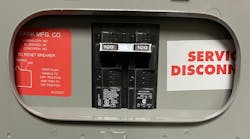Several studies have suggested that employees are more likely to get injured or involved in an accident within their first six months to a year on the job. However, these findings do not indicate that new employees are less safe and therefore are more prone to injuries and other work-related accidents.
In most cases, accidents stem from several factors, including inexperience in performing a task for the first time, unfamiliarity with the use of certain tools and equipment, lacking a thorough understanding of the work environment, or sometimes just trying to get the job done at all costs to create that first impression. It’s no secret these injuries and work-related accidents are costing employers millions of dollars in both direct and indirect costs — ranging from workers compensation costs to low morale to lack of productivity.
Several employers have recognized this growing problem in the workplace and are now putting programs in place that specifically target new employees. Faith Technologies recently rolled out the Short Service Employee (SSE) program, meant to target new employees within their initial six months tenure with the company. First, the program identifies new employees by issuing him or her a blue hard hat (Photo). Then they are assigned to a mentor, who is an employee with more experience and has had a longer tenure with the company or on a specific job site (usually more than a year). The role of the mentor is to guide and coach the new employee as well as help them make a smooth and easy transition within that initial six months. Some functions of the mentor include the following:
• Ensuring that the new employee actively participates in the daily operational risk management (ORM) process.
• Understanding the company’s near-miss and injury reporting procedures.
• Demonstrating the safe use of tools and equipment.
• Making sure the new employee can locate SDS, first aid, and incident reporting kits.
• Selecting correct tools, equipment, and PPE for the task at hand.
• Identifying and communicating hazards to job-site leader and fellow coworkers.
• Maintaining a clean work environment, free of housekeeping hazards.
At the end of the six-month mentorship program, the mentor and the new employee must fill out a survey to rate one another’s performance. A good survey from the mentor means the new employee has successfully completed the mentorship program and is qualified to graduate. At an informal ceremony held on the job site or in the office, the new employee’s blue hard hat is swapped for a white one by a member of upper management (e.g., group manager, project manager, or safety manager), signifying successful completion of the program. The new employee also receives 25 safety recognition points that could be redeemed for company apparel items, tools, gifts cards, etc., through the company’s online store.
The first set of graduates of this program were recognized recently. Although it is still very early to assess the impact of this program, surveys received from this first group of participants suggest it has been beneficial. Ultimately, the overall goal of this program is to ensure that the new employee is able to demonstrate an understanding of the company’s safety culture as well as display an overall positive attitude toward it. Achieving this goal makes job sites safer, and, to a large extent, guarantees every employee will go home safe to their loved ones every day.
Amara is a senior safety manager at Faith Technologies, overseeing the company’s safety program while helping create a culture of safety for all employees. He conducts safety training, visits job sites to support and encourage safe behavior, and provides feedback to employees on safety practices — all while developing, recommending, and implementing new safety policies and/or strategic objectives, staying current with OSHA, DOT, EPA, MSHA, and other regulations and industry trends. He also oversees worker’s compensation claims management, maintains accurate records to meet insurance company and federal standards requirements, and organizes information and publishing reports to the safety committee, president, and other applicable internal or client-driven individuals. He can be reached at [email protected].




